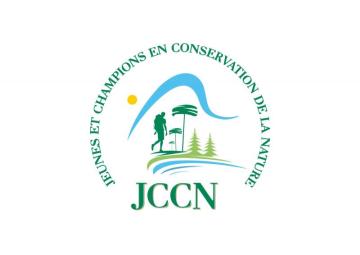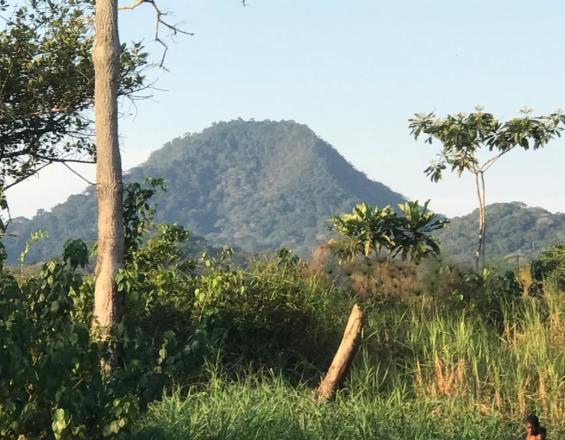
Grey parrot conservation by local communities in Maniema

The community conservation reserve for grey parrots(Psittacus erithacus), is an initiative of the communities of the Albati, Kimwatchi, Kasongo Mirundu, Kapuri unga and Ngungwa groups through the organization Action Communautaire pour la Gestion de l'Environnement (ACOGE) and with technical and financial support from PIREDD/Maniema implemented by GIZ. The reserve is located in the Mulu sector, in the Kasongo territory, and covers an estimated total area of 32,800 ha. In view of the way it is managed, the reserve being owned by members of local communities, it represents an important opportunity to strengthen the conservation of individuals of the grey parrot(Psittacus erithacus).
Contexto
Défis à relever
In terms of threat and pressure, it's worth noting the presence of non-native populations in certain parts of the reserve, who come with bad practices for capturing parrots without regard for the established rules. The creation of the reserve is intended as a solution to this problem.
Ubicación
Procesar
Summary of the process
As a community reserve is in the process of being created, customary guardians, heads of families and groups are involved in the process. The organization Action Communautaire pour la Gestion de l'Environnement (ACOGE), with technical and financial support from PIREDD/Maniema and implemented by GIZ, is also supporting the process in close collaboration with community members.
Building Blocks
Support for the Action Communautaire pour la Gestion de l'Environnement (ACOGE) organization
Action Communautaire pour la Gestion de l'Environnement (ACOGE) is a community organization working in the environmental field at local level.
Enabling factors
The technical and financial support received from various partners, in particular GIZ, is a key factor in the success of the parrot conservation program.
Lesson learned
As a lesson, community members benefited from several awareness-raising sessions on the importance of conservation, which stimulated community involvement and the participation of all local stakeholders.
Technical and financial support for PIREDD/Maniema implemented by GIZ
The integrated REDD+ program in Maniema (PIREDD Maniema) is helping to reduce emissions and increase removals by setting up protected forests (APAC, CFCL, community reserves), restoring forested landscapes and promoting sustainable agriculture.
Enabling factors
The success of the program to set up community reserves is marked by community involvement and participation in the creation and decision-making process.
Lesson learned
The lesson learned is that the initiative to create the community reserve was accepted by community members who are landowners.
Impacts
The establishment of the reserve has made it possible to conserve a diversity of ecosystems, providing a habitat favorable to the life of grey parrots(Psittacus erithacus). Apart from grey parrots, the reserve is home to other ungulate species (Sitatunga, bushpigs, buffalo, etc.) and primates (Pan troglodytes, cercopithecines such as Mona, Ascanus and Mitis). The reserve's ecosystems also offer a number of ecosystem goods and services. These include the presence of several species of fungi and edible caterpillars living or developing in symbiosis with ectomycorrhizal tree species, especially of the Uapaca genus. There are also species of wild medicinal and food plants of great importance to the communities, etc. The area covering the community reserve is home to sacred sites.
Beneficiaries
beneficiaries are members of local communities, technical and financial partners, researchers, members of civil society and environmental activists.
Sustainable Development Goals
Story
The community conservation reserve for grey parrots(Psittacus erithacus), is an initiative of the communities of the Albati, Kimwatchi, Kasongo Mirundu, Kapuri unga and Ngungwa groups through the organization Action Communautaire pour la Gestion de l'Environnement (ACOGE) and with technical and financial support from PIREDD/Maniema implemented by GIZ. The reserve is located in the Mulu sector, in the Kasongo territory, and covers an estimated total area of 32,800 ha. Based on a management model to be agreed with the organizations supporting the initiative, the reserve is owned by the Bazimba community of the above-mentioned groups. In its current configuration, the reserve is located on the banks of the Bulale river and the Kisandji marsh.
Located in the central basin of the eastern part of the DRC, the area covering the Grey Parrot Reserve in the Kasongo territory is home to a variety of habitats, including primary and secondary forests, lowland swamp forests and savannahs. These ecosystems provide a favorable habitat for the Grey Parrot(Psittacus erithacus), the reserve's flagship species. Apart from grey parrots, the reserve is home to other ungulate species (Sitatunga, bushpigs, buffalo, etc.) and primates (Pan troglodytes, cercopithecines such as Mona, Ascanus and Mitis). The area is also home to a number of mountain peaks, such as Kasongo Ndanda. The reserve's ecosystems also offer a number of ecosystem goods and services. These include the presence of several species of fungi and edible caterpillars living or developing in symbiosis with ectomycorrhizal tree species, especially of the Uapaca genus. There are also species of wild medicinal and food plants of great importance to communities, etc.




